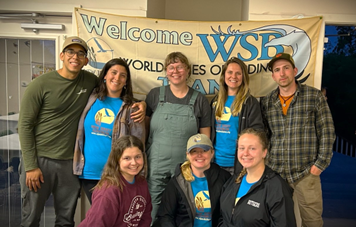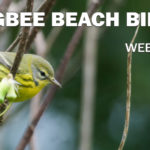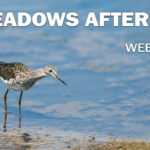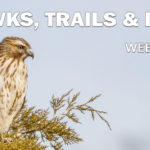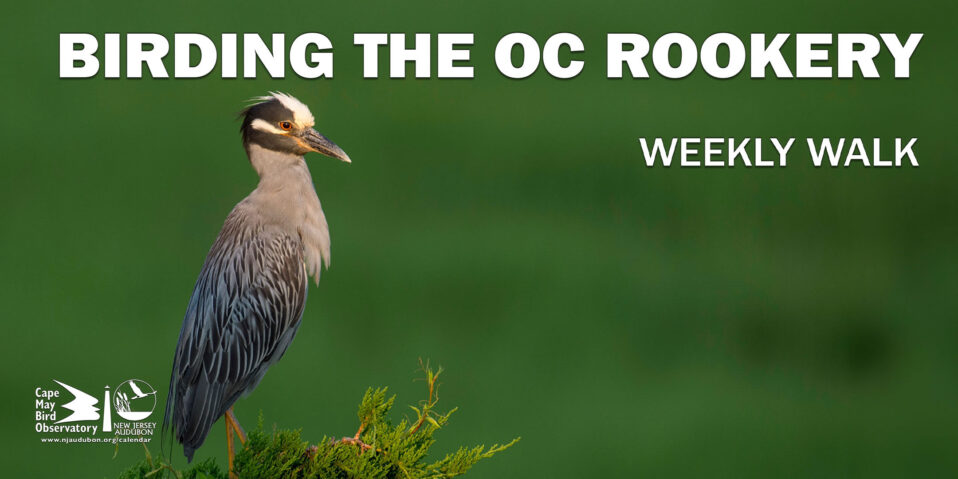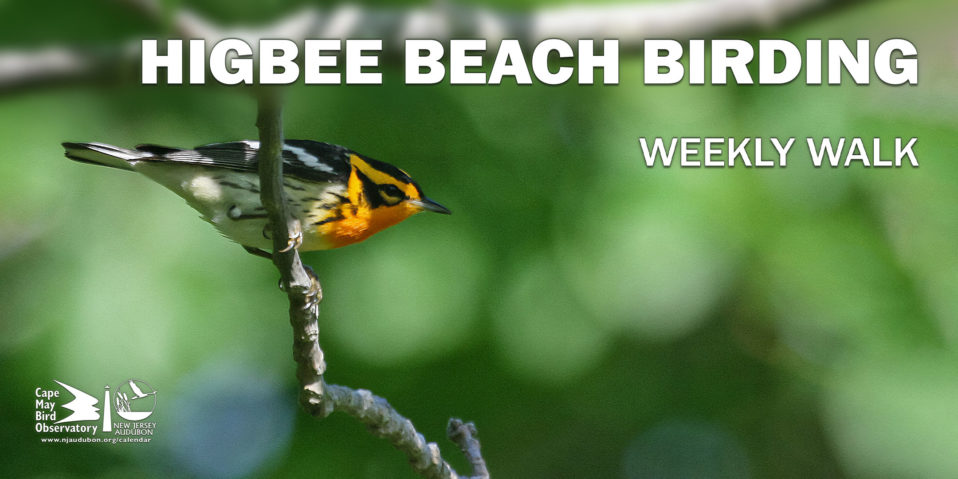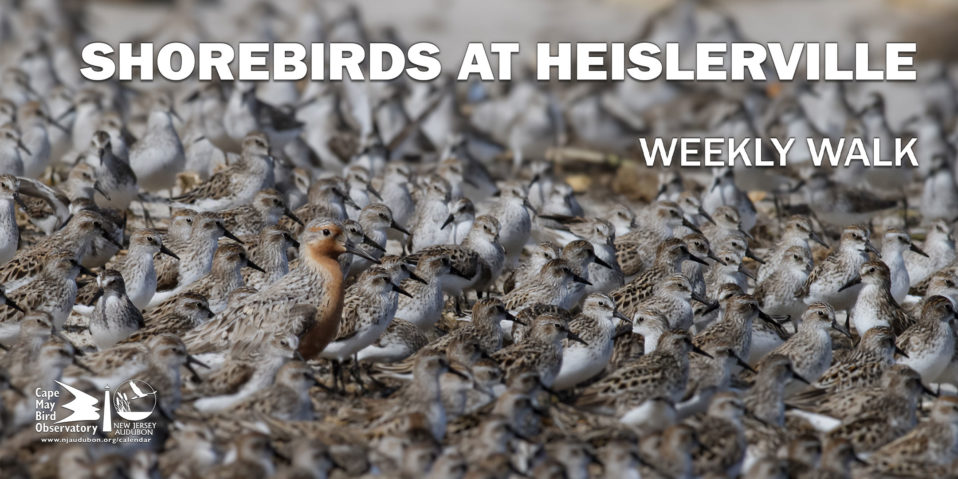Holiday Blog 2023
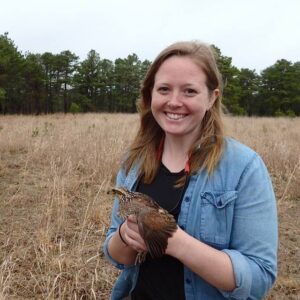
Dear Friends of New Jersey Audubon’s Stewardship Team,
I am writing to you as I sip on a hot cup of coffee, watching sparrows flip through the leaves on a brisk, overcast day. These are my favorite types of winter days because I can stop and reflect on the years past. This year, like many, has brought some challenges, but with that comes new and exciting opportunities, ones that would not be possible without your unwavering support and dedication to our natural resources. Without our partners, landowners, stakeholders, and supporters, we would not be able to accomplish what we have over the past year.
This past spring, we were delighted to welcome two new team members who both bring unique experiences and energetic passion to our work. Kelly Wenzel, a familiar face to many in the education world, joined the Stewardship Team as Program Manager for a regrant program in the Delaware River Watershed. Celia Vuocolo, a Hunterdon County native, joined the team after extensive experience working with private landowners in Virginia. We hope you have had a chance to meet our newest team members and to reconnect with the rest of the crew this year.
In addition to growing our team, we are thrilled to announce the beginning steps of our Strategic Plan for our Centers and Sanctuaries. The plan will cover our 3,000 acres of forests, grasslands, wetlands, and tidal marshes that are scattered across the Garden State. The plan will help us identify and prioritize opportunities for habitat restoration and improved public access and recreation. In addition, the plan will help us better deliver technical assistance to private landowners through the Working Lands for Wildlife Program and Healthy Land and Waters Grant Program.
Another big initiative that was launched this year is our Watershed Restoration & Community Empowerment Program. The program will re-grant federal dollars for community-based organizations in the Delaware River Watershed looking to grow and plan for the future. If you are interested in applying, please visit www.njaudubon.org/watershed-grants.
Beyond big-picture planning, the team was still hard at work restoring habitat across the state. Over 1,500 acres of forests, grasslands, and wetlands were restored for species like bog turtle, golden-winged warbler, swamp pink, and more, and nearly 500 people were connected with technical and financial assistance. The list of accomplishments could go on and on, but what I am most proud of is the people who make up the Stewardship Team. The talented and enthusiastic staff, along with your willingness, support, and excitement, make all this possible. I’m pleased to introduce you to our staff and to let them tell their story of what they are reflecting on this holiday season.
On behalf of the Stewardship Team, I want to express deep gratitude for your continued support, commitment, and most of all, your friendship. For those of you who I have met, I hope we get a chance to reconnect in the New Year. And for those of you I have yet to meet, I look forward to connecting with you soon. I hope you and your loved ones have a safe and warm Holiday Season.
Best Wishes and Happy Holidays,

Welcome to the Team, Kelly Wenzel & Celia Vuocolo!
Kelly Wenzel, Program Manager
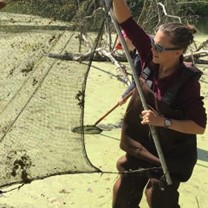
What work are you most proud of in 2023?
Kelly Wenzel has returned to NJ Audubon as the Program Manager for the Delaware River Watershed Conservation Fund. Kelly’s 12 1/2-year history with New Jersey Audubon in project development and management paired with training in resource development and appreciative inquiry make her a welcome addition to the Stewardship Team. As Project Manager, Kelly will work with community-based organizations within the Delaware River Watershed to provide guidance and training for NJ Audubon’s small grants program and distribute funds for conservation projects throughout the Watershed based on National Fish and Wildlife Foundation guidelines.
“I am proud to report that the Watershed Restoration and Community Empowerment Program has been launched and am looking forward to seeing the proposals!”
What species do you like doing stewardship work for the most? And why?
“I think stoneflies are creepy and cool – I mean, they build their houses out of grains of sand or little pieces of wood, how cool is that?! If you manage water quality for an animal like stonefly then you’ll ultimately be managing for cool things like brook trout too!”
Celia Vuocolo, Project Coordinator – Ag & Wetlands, Northern Region
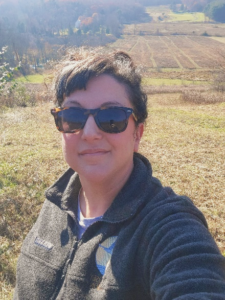
What work are you most proud of in 2023?
Celia Vuocolo is the new Stewardship Project Coordinator for Agriculture & Wetlands. She grew up on a rural property in Hunterdon County, where her family raised sheep and practiced forestry. Before coming to her current position, Celia lived in Virginia for ten years and worked in roles that advanced wildlife conservation and restoration on private lands with organizations like the Piedmont Environmental Council, Smithsonian Conservation Biology Institute and Quail Forever. Celia is passionate about pollinator conservation, particularly bumble bees, and has spent time surveying and studying the effects of a gut parasite, Nosema, on local bumble bee populations through her graduate studies at George Mason University. She is an alumnus of Delaware Valley University Celia and her husband have two young daughters, two dogs and a handful of chickens.
“I’m most proud of my first 6 months on the job! I joined NJA in June 2023 and have enjoyed getting to know my co-workers, building new partner relationships, and digging into restoration projects.”
What species do you like doing stewardship work for the most? And why?
“I think it would be a tie between grassland birds and native pollinators. I really enjoy restoring open spaces and celebrating the connection between early successional habitat and agriculture.”
Danielle Bara, Project Coordinator – Forest Health & Resiliency, Southern Region
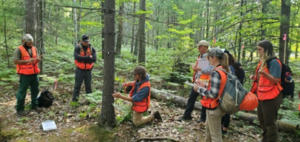
What work are you most proud of in 2023?
“This year I started a master’s program through Michigan State University to earn a degree in Forestry, which has easily been one of the most rewarding experiences of the year. While most of the program is online, I did travel to Michigan over the summer for an in-person course where I spent 9 days with fellow students in the woods learning from professionals about forest ecology, tools and techniques of forest measurements, and forest management activities. This is the start of a 2-year journey wherein I aim to take what I am learning and apply it directly to my work at New Jersey Audubon in managing for the health and resiliency of our forests.”
Levi Morris, Technician – Ag & Wetlands, Southern Region
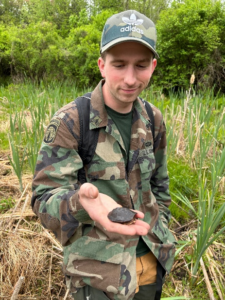
What work are you most proud of in 2023?
I’m most excited about the work we’ve done to support bog turtle populations in NJ. Besides being a unique species with a fascinating life history, working with bog turtles incorporates the aspects of stewardship that I find most interesting. The intersection of private and working lands, habitat restoration, and public land stewardship. Bog turtles rely on open herbaceous wetlands, because of this they have persisted on working lands where livestock grazing and haying maintained the plant communities they depend on. When working in these landscapes I often reflect on this quote from “A Sand County Almanac” written by Aldo Leopold as he witnessed the rampant degradation of natural areas and farmland alike. It’s a reminder for myself to think more open-mindedly about what conservation can be. Bog turtles capture the duality of our impacts on nature, the draining of wetlands, suppression of fire, and overharvest of beavers contributed to their decline, but at the same time they thrived on the small dairy farms that were once common throughout their range.
“The central thesis of game management is this: game can be restored by the creative use of the same tools which have heretofore destroyed it — axe, plow, cow, fire . . .”
What is your favorite memory from the field this year?
“We had the opportunity to partner with The Work Group, an organization that facilitates work experiences for at-risk youth as they transition into adulthood. They were a huge help on a wetland restoration project as well as several tree plantings. While working in the wetland we came across a few red-backed and two-lined salamanders. To an avid naturalist or herpetologist these would likely have been deemed common and of little note as they moved on and looked for a rarer more “valuable” species. It was incredibly refreshing to see their fascination and excitement over these species. While holding a salamander one young man exclaimed “It’s like a Pokémon!”. I left with a greater appreciation for the seemingly common wonders of the natural world.”
What species do you like doing stewardship work for the most? And why?
“I’m most proud of the invasive plant control and native tree and shrub plantings at the Cape May Point State Park. It’s a large project that requires a significant effort to maintain and improve. But we’ve had great success with our 2023 plantings and have seen several areas producing native wildflowers and native trees regenerating.”
Ryan Hasko, Project Director – Forest Health & Resiliency
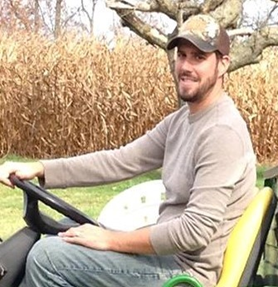
What work are you most proud of in 2023?
“I was proud to see the completion of ecological forestry work completed on a 60 acre tract on a private property that will promote the regeneration of desirable native tree species, while also create structural complexity to support a wide range of wildlife species.”
What is your favorite memory from the field this year?
“Being able to participate in monitoring of a globally rare plant, Swamp pink. It was the first time I was able to observe the plant firsthand.”
Alyssa Bright, Technician – Ag & Wetlands, Southern Region
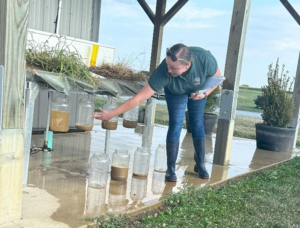
What is your favorite memory from the field this year?
“It’s very tough to narrow my favorite memories in the field this year to just one, but I would have to say attending the New Jersey Forest Fire Service’s Wildland Fire Safety training is at the top of my list. Prescribed fire is an excellent tool for many wildlife habitat restoration projects to manage ecological succession, so it was very cool to see all the tools, processes, and techniques used to manage prescribed burning put into action.”
What species do you like doing stewardship work for the most? And why?
“Any and all native pollinators! They are associated with such beautiful, diverse, habitats of native wildflowers, trees, and shrubs that are so full of color, which brings me happiness. I can’t help but smile when I see Monarch butterflies on goldenrod in September or bumble bees buzzing around my personal favorite, narrowleaf mountainmint!”
Lindsay Gafford, Project Director – Sanctuaries
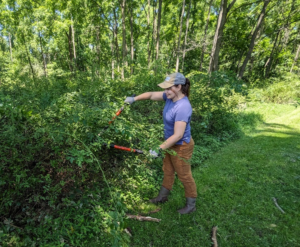
What species do you like doing stewardship work for the most? And why?
“Humans! I think it’s important to have a balance between habitat and recreation. My goal is to improve the trails and accessibility at our sanctuaries so that more people can enjoy it, while still protecting sensitive habitat. If you live near our Wattles Stewardship Center (Port Murray, NJ), I invite you to join me for our Volunteer Trail Stewards events every second Saturday during the growing season. The event sign-up information is on our Eventbrite page.”
Brittany Welch, Project Director – Ag & Wetlands
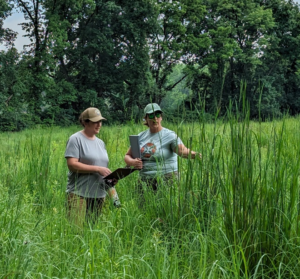
What species do you like doing stewardship work for the most? And why?
“Regardless of target species, the most rewarding Stewardship projects I have found are those implemented on working lands. Learning about a farmer’s operation, providing the tools to help them improve habitat while addressing problems they have been facing is a puzzle that is so fun to pull together. In addition to the satisfaction of a job well done, we are building relationships in the process while creating a conservation ethic within the community. It is even more rewarding to return to projects over the years and advance them beyond their original scope to continue making a difference each year, one property at a time. Often times this work benefits a suite of species from amphibians, reptiles, birds, and pollinators.”
